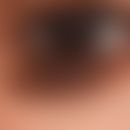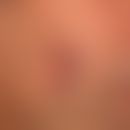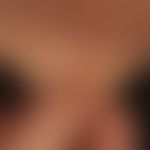Synonym(s)
HistoryThis section has been translated automatically.
DefinitionThis section has been translated automatically.
Generalized, autosomal-dominant (25% new mutations) inherited, multi-organ disease (most common hereditary connective tissue disease) caused by degeneration of elastic fibers with involvement of the eye, skeleton, cardiovascular system and skin. The skin lesions are not specific, but can be valuable monitoring evidence. Cardiovascular problems determine disease progression, prognosis and life expectancy. The disease is caused by a mutation in the fibrillin 1 gene. Fibrillin-1 is a component of microfibrils that are important for synthesis and homeostasis of the elastic fiber network and for the sequestration and activation of TGF-beta.
You might also be interested in
Occurrence/EpidemiologyThis section has been translated automatically.
Prevalence: 3-10/10,000 inhabitants. No gender dominance
EtiopathogenesisThis section has been translated automatically.
TypI: Predominantly autosomal dominant inheritance, in 15% sporadic inheritance of mutations of the FBN1 gene(fibrillin1 gene; gene locus: 15q15-21.1) with consecutive disturbance of the structure of microfibrils in the connective and supporting tissue. Age effect of the father is discussed.
In 70% of cases familial clustering, in 25% new mutations with an average increased paternal age (36 versus 29 years).
Type II: In type II (the affiliation to the Marfan syndrome is doubted in the meantime, possibly a Loeys-Dietz syndrome is present) there are mutations in the genes TGFB-receptor-1 and TGFB-receptor-2.
ClinicThis section has been translated automatically.
- Skin: Striae cutis distensae (24%) over chest, shoulder, thigh (without overweight!), elastosis perforans serpiginosa.
- Eyes: lensectopy (60% from the 4th year of life), possibly with iridodonesis (= iris flap, not "lens flap"), myopia (34%), cataract, retinal detachment.
- Skeleton: arachnodactyly, long bones of the extremities, olichostenomy = "long narrow limb" (77%), long, narrow head, kyphoscoliosis (44%), gothic palate (60%), long ribs, pectus excavatum or carinatum. Flat feet, genu recurvatum, hyperextensibility of the joints (56%), joint dislocations.
- Cardiovascular system (98%): disorders develop over time as a result of reduced mechanical strength: aortic aneurysms, particularly in the ascending aorta, mitral valve insufficiency (floppy valvae) (66%).
- Lungs: apical lung cysts, recurrent pneumothorax (5%).
- Ectasia of the lumbosacral dura (67% in middle-aged adults aged 36 years).
DiagnosisThis section has been translated automatically.
The diagnosis (guidelines of the revised Ghent-Nosologie/Loeys BL et al. 2010) can be made clinically if the following constellations are present in the case of a negative (or positive) family history:
I. Patient without a positive family history of Marfan syndrome
Aortic root ectasia or dissection and lens luxation
Aortic root ectasia or dissection and FBN1 mutation
Aortic root ectasia or dissection and systemic involvement (score =/>7 points)
Lens luxation and FBN1 mutation with aortic root ectasia or dissection
II Patient with positive family history of Marfan syndrome
Related 1st degree fulfils the diagnostic criteria for Marfan syndrome
Fibrillin-1 mutation detected
Lens Luxation
Systemic participation (points score =/<7)
Aortic root ectasia
Characteristic and point value assignment (system participation at =/>7 points; respective point values in brackets)
Positive hand and thumb sign (3)
Positive hand or thumb sign (1)
Pigeon breast (2)
Funnel chest or thoracic asymmetry (1)
folding foot (2)
flat foot (1)
pneumothorax (2)
Duraektasia, radiological detection (2)
Protusio acetabuli, radiological detection (2)
Ratio of arm span to body size greater than 1.05 (without severe scoliosis) (1)
Reduced elbow extension (=/<170°) (1)
At least 5 facial symptoms (longskull, enophthalmus, laterally sloping / antimongoloid eyelid axes, molar hypoplasia, retrognathia) (1)
Striae of the skin (1)
Myopia (>3 dpt) (1)
Mitral valve prolapse (1)
Differential diagnosisThis section has been translated automatically.
- Congenital aachnodactyly with contractures(Beals-Hecht syndrome - mutation in the fibrillin-2 gene)
- Homocystinuria (frequent thromboses, no aneurysms, lens ectopy possible)
- Congenital contractural arachnodactyly
- Klinefelter syndrome
- Syndrome of the fragile X chromosome
- Mosaic trisomy 8
- MEN
- Ehlers-Danlos syndrome; osteogenesis imperfecta.
TherapyThis section has been translated automatically.
- Primary prophylaxis: Genetic counseling (50% risk of transmission). Prenatal diagnosis is possible by molecular biology if a mutation is known in the family.
- Secondary prophylaxis and treatment: Regular echocardiographic check-ups, especially important during pregnancy; endocarditis prophylaxis in case of aortic and mitral insufficiency; timely cardiosurgical correction, possibly the still experimental prevention of aortic dilatation with β blockers. Conservative and surgical-orthopedic measures; possibly early onset of puberty for growth reduction and better treatment of kyphoscoliosis. Eye checks (retinal detachment). Adapted lifestyle: No physical strain, no team sports with physical contact.
Progression/forecastThis section has been translated automatically.
LiteratureThis section has been translated automatically.
- Abdelmalek NF et al (2002) Cardiocutaneous syndromes and associations. J Am Acad Dermatol 46: 161-183
- Achard EC (1902) Arachnodactyly. Bull Mem Soc Med Hop Paris 19: 834-843
- Benjamin IJ (2001) Matrix metalloproteinases: from biology to therapeutic strategies in cardiovascular disease. J Investig Med 49: 381-397
- Collod-Beroud G et al (2002) Marfan syndrome in the third millennium. Eur J Hum Genet 10: 673-681
- Cook JR et al (2014) Clinical, diagnostic, and therapeutic aspects of the Marfan syndrome. Adv Exp Med Biol 802:77-94.
- Dieckmann C et al (2003) Marfan Syndrome: Pathogenesis, Phenotypes and Diagnostic value, of various Imaging Techniques. Rofo Progresss Geb Rontgenstr New Imaging Procedure 175: 1482-1489
- Dietz HC, Cutting GR, Pyeritz RE et al (1991) Marfan syndrome caused by a recurrent de novo missense mutation in the fibrillin gene. Nature 352: 337-339
- Hollister DW, Godfrey M, Sakai LY, Pyeritz RE (1990) Immunohistologic abnormalities of the microfibrillar-fiber system in the Marfan syndrome. N Engl J Med 323: 152-159
- Kainulainen K, Pulkkinen L, Savolainen A et al (1990) Location on chromosome 15 of the gene defect causing Marfan syndrome. N Engl J Med 323: 935-939
- Lee B, Godfrey M, Vitale E et al (1991) Linkage of Marfan syndrome and a phenotypically related disorder to two different fibrillin genes. Nature 352: 330-334
Loeys BL et al.(2010) The revised Ghent nosology for the Marfan syndrome.
J Med Genet 47:476-85.Marfan AB (1896) Un cas de deformation congenitale des quatre membres plus prononcee aux extremites caracterisee par l'allongement des os avec un certain degre d'amincissement. Bull Mem Soc Med Hop Paris (ser. 3) 13: 220-226
- Milewicz DM et al (1992) Marfan syndrome: defective synthesis, secretion, and extracellular matrix formation of fibrillin by cultured dermal fibroblasts. J Clin Invest 89: 79-86
- Pyeritz RE (1993) The Marfan syndrome. In: Royce PM, Steinmann B (eds) Connective Tissue and Its Heritable Disorders: Molecular, Genetic, and Medical Aspects. Wiley-Liss, New York, pp. 437-468
- Pyeritz RE et al (1979) The Marfan's syndrome: diagnosis and management. N Engl J Med 300: 772
- Raghunath M, Superti-Furga A, Godfrey M, Steinmann B (1993) Decreased extracellular deposition of fibrillin and decorin in neonatal Marfan syndrome fibroblasts. Hum Genet 90: 511-515
Incoming links (21)
Acrochondrohyperplasia; Angioid streaks; Aortic isthmus stenosis; Aortic valve insufficiency; Arachnodactyly; Cowden syndrome; Cutis laxa, autosomal recessive, type 1c; Dermatitis-arthritis syndromes; Dolichostenomelie; Dystrophia mesodermalis congenita; ... Show allOutgoing links (13)
Arachnodactyly; Arachnodactyly, congenital contractile; Cataract; Ehlers-danlos syndrome; Elastosis perforans serpiginosa; Fbn1 gene; Fingers of the madonna; Homocystinuria; Klinefelter's syndrome; Loeys-dietz syndrome; ... Show allDisclaimer
Please ask your physician for a reliable diagnosis. This website is only meant as a reference.






